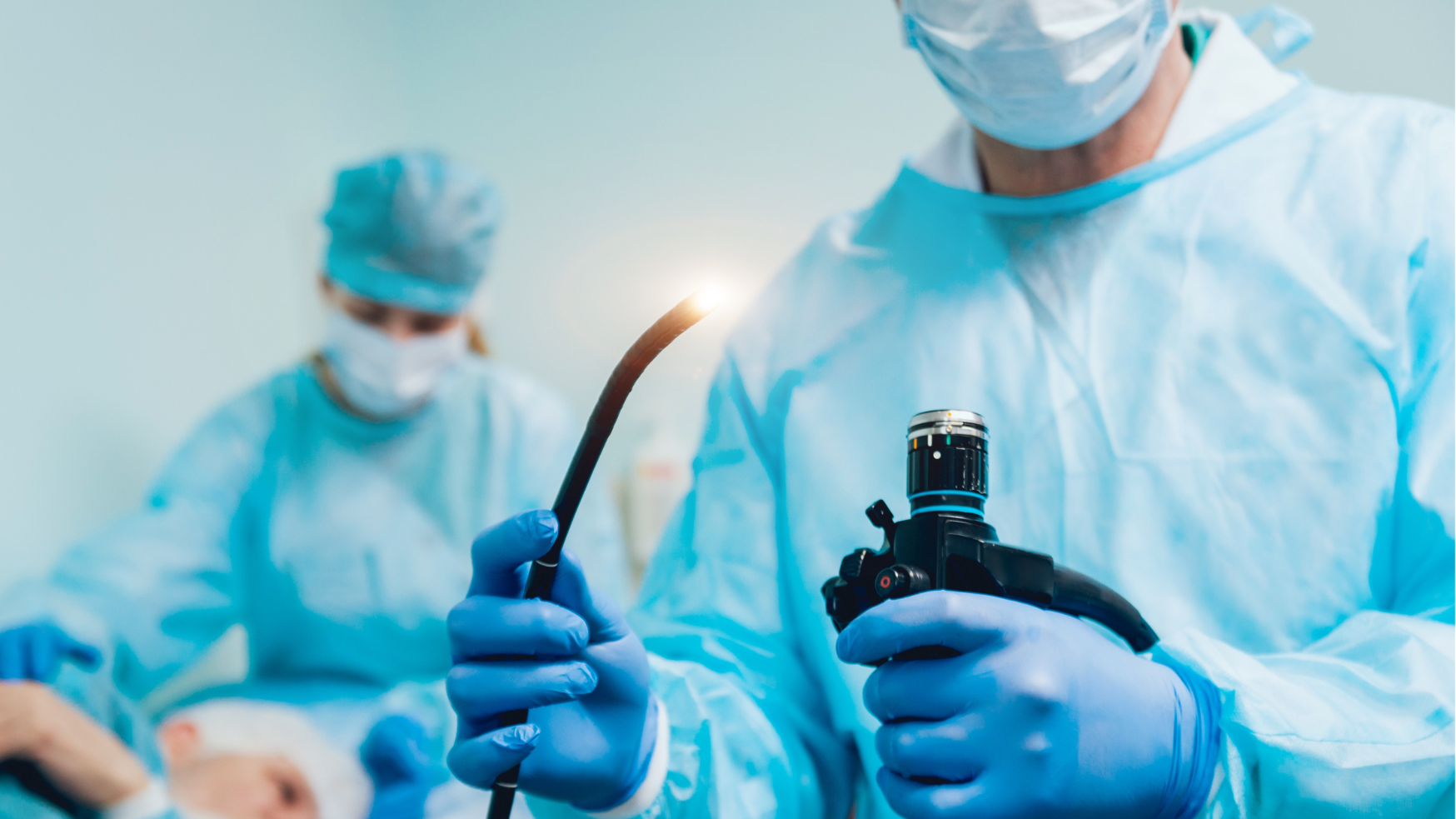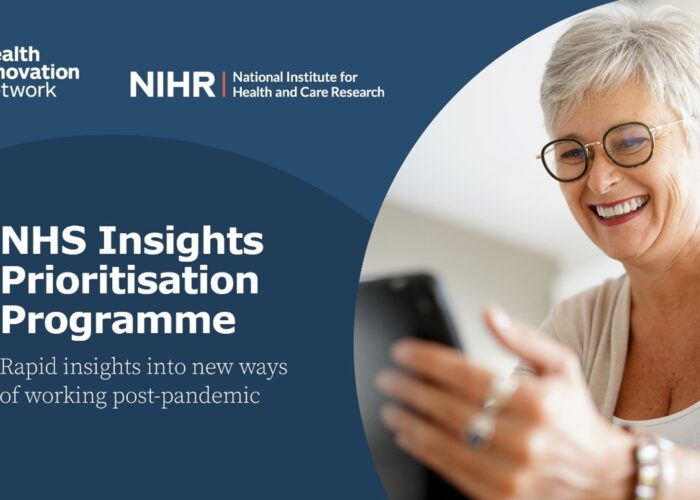By Adam Ashworth, Innovation Lead at Imperial College Health Partners

Earlier this month national endoscopy patient figures were record-breaking for all the wrong reasons. HSJ reported that in November 2022, 110,000 people were waiting for a colonoscopy (or flexible sigmoidoscopy), and the median wait was just over four weeks, double the median wait in November 2019. And whilst these numbers are not the whole picture, the situation that endoscopy teams find themselves in is worsening exponentially. In North West London (NWL), we are acutely aware of the endoscopy crisis, and have been working to better understand how we can collaborate as a NWL health system, to reduce the figures for our local population.
A co-ordinated approach
Naturally, Covid-19 has contributed to the backlog – there are few parts of our healthcare system that do not bear the scars of the pandemic – but endoscopy is also suffering from far greater levels of demand than the services were originally designed to tackle. Projected growth rates for colonoscopy are ~5.3% per annum, driven by changes in demography, population health status, roll-out of new technologies, strategies to improve population health and, most notably, the roll-out and extension of the bowel cancer screening programme (yes, even positive steps towards preventative care can often lead to short-term pains for the system). Coupled with the JAG recommended standards of 3.5 rooms per weighted population, and the ongoing NHS workforce crisis, this has created a perfect storm for endoscopy services, which simply have more patients waiting to be seen than they have the staff or space to treat.
To help services tackle the problem, NHS England has made £312m capital funding available over three years (2022-24), with a view to it being used to deliver quality standards and increase capacity. Imperial College Health Partners (ICHP) has been commissioned by NWL Integrated Care Board (ICB) to conduct a review into endoscopy services across the sector and deliver recommendations focussing on a collaborative approach across localities/boroughs.
The commission is a test of, and testament to, an integrated approach: how can we use this funding as an ICS to all do better together?
Data paints a picture, but people tell the story
At ICHP, real world evidence is an integral part of our change model. A key exercise in scoping the problem has been reviewing the demand and activity data at each individual service provider to create a never-before-seen system-wide view. Pulling together waiting lists and activity logs, verifying and cleaning the data, and then validating it with clinical teams, has been a complex but worthwhile process. Through the validation discussion we are building a deeper understanding of the realities of delivering care and how this is reflected in the data in order to draw valid conclusions at site and sector level.
But the numbers don’t tell the full story. We have also exercised our capabilities in engagement to shine a light on the data through the eyes of the clinicians, endoscopy leads and patients. Over several weeks at the end of 2022, we conducted interviews with staff and patients to get an appreciation of the challenges from their perspective, and what some of the potential solutions could be. This is informing not just what capacity is required, as the quantitative data indicates, but how it can best be utilised.
Sector-wide solutions for sector-wide problems
Using both qualitative and quantitative data has allowed us to develop baseline demand and a capacity model that quite simply shows that services are currently caught between a rock and a hard place. As with the national picture, in NWL the demand is higher than the capacity, successful earlier diagnosis and screening in primary care and community is worsening the problem despite being good things, and the standards set by JAG are not easily obtainable while everyone is working too flat out to take the time to problem shoot.
This might seem like a negative result, but it’s a positive thing. These common challenges mean that we can maximise impact by making universal recommendations (saving time, money and resources), whilst the variations in practice demonstrate where small pockets of best practice are happening, giving us scope to learn from and spread new ideas to support the rest of the system. The common themes mean there is a clear route forward together for our sector, which allows for a much higher return on investment than all services individually trying to solve their own problems.
Take the high rates of Did Not Attends (DNAs) across our locality for example. A collaborative communications approach would reduce costs and allow us to learn, iterate and deploy new tactics at scale much more quickly. Or a system-wide approach to scheduling, supporting patients to access a larger variety of services, could make it easier for them to attend appointments. As highlighted through our engagement, this would particularly support patients who are concerned about waiting times and would be open to travelling further afield for care.
A collaborative approach could also support better use of our workforce. The answer to the workforce crisis is not always a need for more of the same type of workers. Our endoscopy research showed that there are many elements of the pathway being managed by very senior clinicians, that could be supported by different members of multidisciplinary teams with some additional training. For example, in other pathways we have seen mixed nursing models or nurse-led pre-assessment clinics facilitating patients being seen much more quickly. Harnessing the workforce capacity from elsewhere could cut waiting times by allowing for diagnosis/review/assessment to happen outside of these ever so precious and sparing endoscopy rooms . And once again, if we could support this move to a different workforce model across our sector, all NWL endoscopy services would benefit from the upskilled workforce. Technology could also be a driver for this through virtual assessment, or better patient communications that allow remote monitoring. Backlog reduction does not have to happen in hospital. But all these solutions require us to support the whole sector to find the space and networks to think differently.
This kind of coordinated approach could also help us to make better use of our estates. In endoscopy, services simply need more rooms to deliver. National guidance says you need 3.5 rooms per 100k population to deliver an effective endoscopy service. In NWL, current provision of 23 endoscopy rooms across the system falls below this recommendation, driving an excess 85k population not served. But it’ll be years before we can effectively solve the backlog with more estate. In the interim, there are options and ideas for alternative settings that could also deliver the same service to patients, but this can only be facilitated if we take a sector-wide approach. Across NWL we’ve seen innovative approaches used including CT colonoscopy and trans-nasal endoscopy, which could be delivered in outpatients. Safely managing the activity out to other less pressured areas of care, puts less pressure on the need for certain physical spaces to do the work.
Importantly, a sector-wide picture also allows us to explore inequalities, ensuring that any innovation or transformation deployed as a result of the review, not only promotes more personalised care but ensures equity of access across our diverse population as well.
Ultimately, endoscopy services cannot keep delivering in the way they are. But for us to bring in new innovations and new ideas, we first have to understand the overall sector picture . Ensuring confidence and trust in the data, and that each site recognises this data, (or is at least in agreement that what’s represented is an accurate picture of service delivery), is the first step to levelling the playing field.
Once we have a true sector picture showing us where we need to invest our time and resources, and where we should be learning from, we will be able to better forecast (and plan for) demand across the system, rather than just as individual organisations. To do that effectively, we will also need to invest in the head space for the clinical teams on the ground, so they have both the mental capacity and physical capacity to plan and implement change.
This review of endoscopy services in NWL is a positive step towards providing us – as a whole sector – with the intelligence required to build a strategy. This in turn informs our response to capital bids, enabling the building of optimal capacity across NWL. Contact Adam Ashworth for more information.



